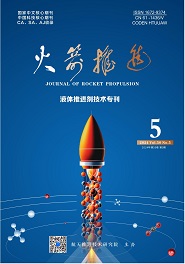航天推进技术研究院主办
HANG Guan-rong,HONG Xin,KANG Xiao-lu.Current status and development trend of space propulsion technologies abroad[J].Journal of Rocket Propulsion,2013,39(05):7-15.
国外空间推进技术现状和发展趋势
- Title:
- Current status and development trend of space propulsion technologies abroad
- 文章编号:
- 1672-9374(2013)05-0007-09
- 分类号:
- V434-34
- 文献标志码:
- A
- 摘要:
- 空间推进技术通常可分为常规化学推进、电推进、微推进和新型推进4大类。常规化学推进是目前航天器的主要推进方式,性能继续提升。电推进已成功证明其优势和可靠性,在各种卫星和深空探测器上大量应用,且朝更宽泛功率的方向发展。蓬勃发展的微小卫星对微小推力、小质量、低功耗的微推进提出了迫切需求。无毒化学推进、太阳帆推进、核推进等新型推进技术正在加紧研制或进行空间飞行试验。首先综述国外卫星和深空探测器等航天器的各类空间推进技术应用和研究现状,然后分析其发展趋势,最后提出对我国空间推进技术的发展建议。
- Abstract:
- Space propulsion technologies usually can be divided into four types: conventional chemical propulsion, electric propulsion, micro propulsion and novel propulsion. The conventional chemical propulsion is the mostly-used propulsion technology, whose performance is being improved continuously. The electric propulsion is widely used in various satellite and deep space probes, whose advantages and reliability have been proved, and whose power range is being expanded. Vigorous development of micro satellites calls for active demands of micro propulsion featured by micro thrust, low weight and low power. The novel propulsion technologies, such as green chemical propulsion, solar propulsion, nuclear propulsion, are fast-developed or flight-testing in space. The application and research status of space propulsion technology used in foreign satellites and deep space probes are reviewed, and the development trends are analyzed. Several suggestions are given on the development of domestic space propulsion technologies.
参考文献/References:
[1]BERGE S, EDFORS A, OLSSON T, et al. Advanced AOCS design on the first small GEO telecom satellite [C]// 60th International Astronautical Congress. Daejon, South Korea: Curran Associates, Inc, 2009: IAC-09.C1.6.10.
[2]MEYER M. In-Space propulsion systems roadmap-technology aera 02[EB/OL].[2012-11-28]. http://www.nasa.gov.
[3]Liou Larry C, Dankanich John W, Alexander Leslie L. NASA In-Space Advanced Chemical Propulsion Deve- lopment in Recent Years, AIAA-2009-5126[C]. 45th AIAA/ASME/SAE/ASEE Joint Propulsion Conference & Exhibit,Denver, USA, 2009.
[4]MATTHIJSSEN R, VAN PUT P. “State-of-the art” gaug- ing components for improved propellant management on 3-AXIS Stabilized Spacecraft, AIAA-2006-4714[R]. USA: AIAA, 2006.
[5]DUDNEY R S. Rescue in space [J]. AIR FORCE Maga- zine, 2012(1): 38-41.
[6]Hughes/Boeing. HS-601 / BSS -601 [EB/OL]. [1995-04-07]. http://space.skyrocket.de/doc_sat/hs-601.htm
[7]HSCI. Satmex 5 [EB/OL]. (1998-12-05) [2013-03-22]. http://space.skyrocket.de/doc_sdat/satmex-5.
[8]KILLINGER R, KUKIES R, SURAUER M. Final report on the ARTEMIS salvage mission using electric propulsion, AIAA-2003-4546 [R]. USA: AIAA, 2003.
[9]KAJIWARA Kenichi, IKEDA Masafumi, kOHATA Hiroki. ETS-Ⅷ Ion engine and its operation on orbit, IEPC-2009-048[R]. Ann Arbor, USA: IEPC, 2009.
[10]DEPASQUALE Dominic, CHARANIA A C, KANAYA- MA Hideki. Analysis of the earth-to-orbit launch market for nano and microsatellites, AIAA-2010-860[R]. USA: AIAA, 2010.
[11]MUELLER J. A survey of micro-thrust propulsion op- tions for microspacecraft and formation flying missions [EB/ OL]. [2008-04-09]. http://mstl.atl.calpoly.edu.
[12]BAKER Adam M, CURIEL Alex da Silva, SCHAFFNER Jake, et al. You can get there from here: advanced low cost propulsion concepts for small satellites beyond LEO [J]. Acta Astronautica, 2005 (57): 288-301.
[13]BRUNO C, ACCETTURA A G. Advanced propulsion systems and technologies, today to 2020[R]. Reston, USA: American Institute of Aeronautics and Astronautics, Inc., 2008.
[14]SCHARLEMANN C. Green advanced space propulsion: a project status, AIAA-2011-5630 [R]. USA: AIAA, 2011.
[15]ANFLO K, CROWE B. In-space demonstration of an ADN -based propulsion system, AIAA-2011-5832[R]. USA: AIAA, 2011.
[16]KAWAGUCHI Junichiro. World's first solar sail, IKAROS, and hybrid solar power sail for outer solar systems [EB/OL]. [2011-04-05]. http://www.aiaa.org.
[17]SEMENKIN A V, TESTOEDOV N A, YAKIMOV E N, et al. Overview of electric propulsion activity in Russia [C]// 30th International Electric Propulsion Conference. Flo- rence, Italy: IEPC, 2007: 267-275.
[18]CASAREGOLA C, CESARETTI G, ANDRENUCCI M. The European HiPER programme: high power electric propulsion technology for space exploration[C]// 32nd International Electric Propulsion Conference. Wiesbaden, Germany: IEPC, 2011: 209-215.
[19]杭观荣, 康小录. 美国AEHF军事通信卫星推进系统及其在首发星上的应用[J]. 火箭推进, 2011, 37(6): 1-8.
[20]姜文龙, 杨成虎, 林庆国. 高性能卫星用490 N轨控发动机研究进展[J]. 火箭推进, 2011, 37(6): 9-13.
相似文献/References:
[1]王小永,张天平,江豪成,等.40 mN/3 000 s氙离子电推进系统工作性能在轨测试与分析[J].火箭推进,2015,41(01):76.
WANG Xiao-yong,ZHANG Tian-ping,JIANG Hao-cheng,et al.In-orbit test and analysis of working performance for
40 mN/3 000 s xenon ion electric propulsion system[J].Journal of Rocket Propulsion,2015,41(05):76.
[2]韩泉东,洪 鑫,周海清.空间推进技术需求与发展分析[J].火箭推进,2012,38(02):9.
[3]何永英.卫星单元肼推进系统安全性设计与实现[J].火箭推进,2012,38(05):18.
HE Yong-ying.Safety design and realization of hydrazine monopropellant propulsion system for satellites[J].Journal of Rocket Propulsion,2012,38(05):18.
[4]何永英.卫星单元肼推进系统延寿能力分析[J].火箭推进,2016,42(01):37.
HE Yongying.Analysis on lifetime extension capability of monopropellant hydrazine propulsion system for satellites[J].Journal of Rocket Propulsion,2016,42(05):37.
备注/Memo
收稿日期:2013-01-25;修回日期:2013-03-21
作者简介:杭观荣(1981—),男,博士,高级工程师,研究领域为卫星推进技术
